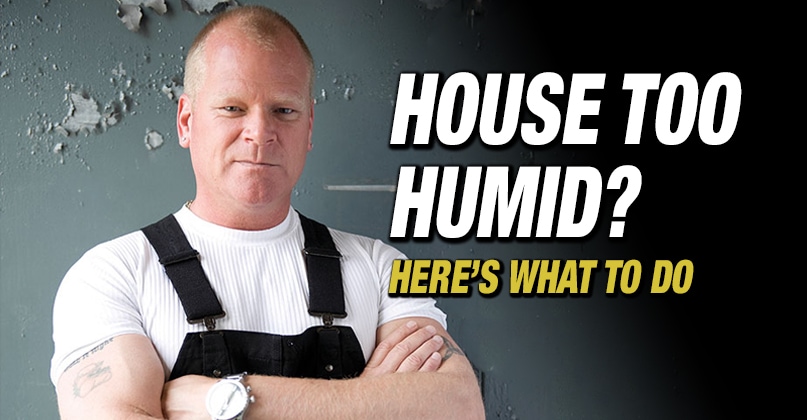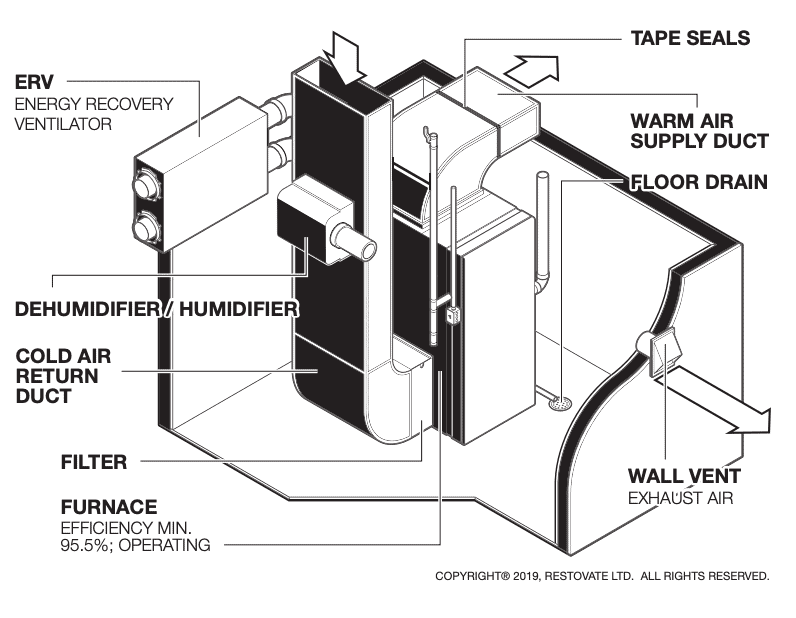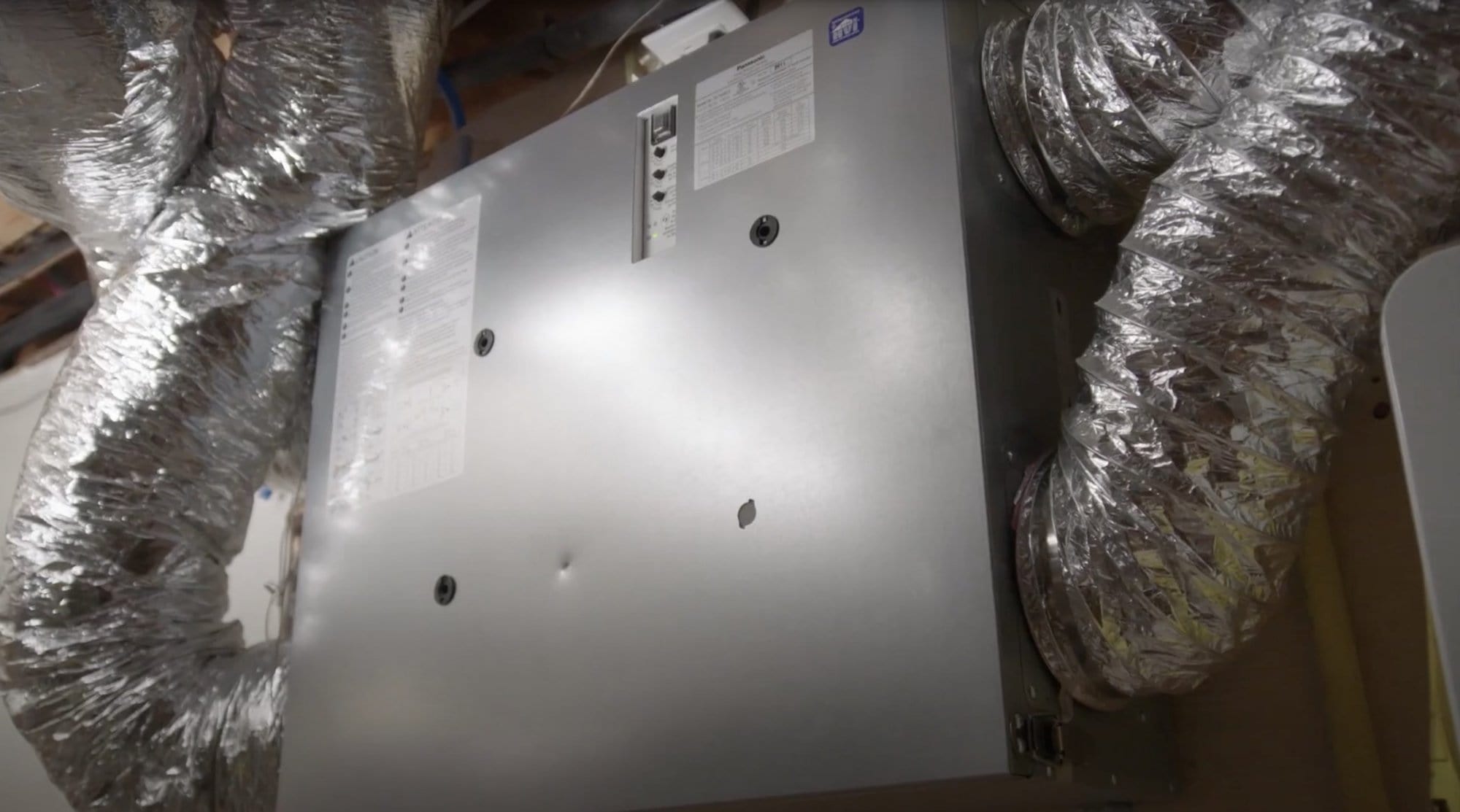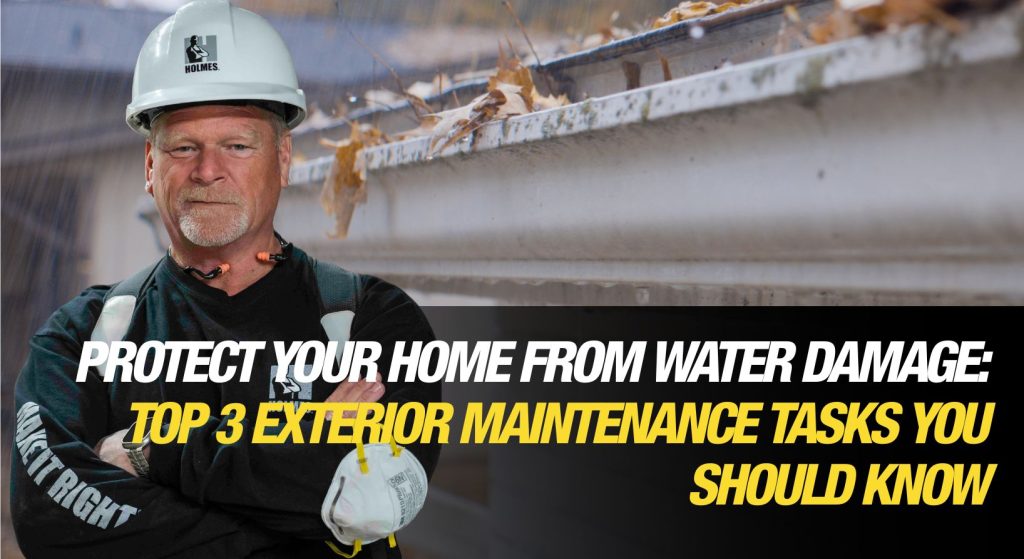Your gutters play a bigger role in protecting your home than most people realize. Be aware of these 9 signs your gutters were installed incorrectly. When they’re installed properly,...

House Too Humid? Here Is What To Do
By Mike Holmes
Mike’s Advice / Home Safety & Maintenance
Friday, January 20th, 2023 @ 10:22am
Is Your House Too Humid?
Every time we breathe, cook, clean, and bathe in our home, we’re creating moisture. This moisture we create needs to escape or it will cause poor indoor air quality, leading to issues with mold and rot. So, is your house too humid?
How do you know if your house has too much moisture?
You can purchase a moisture meter (hygrometer) to measure indoor humidity levels. Energy Star recommends that ideal indoor humidity levels be between 30 and 50%. This does fluctuate from season to season.
Think your house is too humid? Here are some obvious signs to look out for:
-
Condensation on your windows (weeping windows)
-
Hardwood flooring starts to swell and buckle
-
If you find mold in your home it means there’s too much moisture (check your bathrooms and kitchens)
-
Indoor air feels stale
-
Temperature feels higher
-
Mildew or musty odor
-
Peeling paint
Many of the building materials used in your home’s construction can act as food for mold if you’re not addressing moisture issues. Wood, drywall, and carpeting are found all over your home, and they make prime targets for mold growth.
Here is what you need to do to get rid of excess moisture in your home:
Proper Ventilation Strategies To Control Humidity
Many newer homes are built to be airtight – which is a good thing for your home’s energy efficiency. However, our home needs a way to expel that pent-up, moisture-filled stale air and replace it with fresh outdoor air. Here are some ways to create proper ventilation in your home:
Install an HRV
The best way to deal with poor ventilation is to install a Heat Recovery Ventilator (HRV). Connecting to your existing forced-air heating system or a specially installed network of outdoor air ducts, the HRV will have two fans. One fan will expel the indoor air from inside to the outdoors, and the other will bring fresh outdoor air into your home. It will maintain a good balance of ventilation in your home.
Install an ERV
Installing an Energy Recovery Ventilator (ERV) will take things a step further by stabilizing humidity levels, which will reduce the work of your air conditioner and dehumidifier.
We install the Panasonic ERVs on our projects. Panasonic’s Intelli-Balance™ and WhisperComfort ERV are fantastic solutions for builders and homeowners. WhisperComfort Energy Recovery Ventilator (ERV) is a stand-alone system that provides balanced ventilation.
If your home has an HRV or an ERV it should be running constantly to allow this air exchange to occur. If you turn it off, you could start seeing issues with mold and excess moisture.
RELATED: Do Homeowners Actually Care About Indoor AIr Quality?
Turn On Your Kitchen Exhaust Fan
Proper kitchen ventilation is very important. Turn your extractor fan on in the kitchen to prevent the moisture build-up, and leave it on for longer than you are cooking.
Leave Your Bathroom Ventilation Fan Running
When you are showering, run your ventilation fan for at least 30 minutes AFTER the shower. If you can set it on a timer, so you don’t forget, that’s the ideal solution.
If you have a bathroom window, open it a little and turn the extractor fans on to stop condensation from forming. It will help bring down the moisture levels.
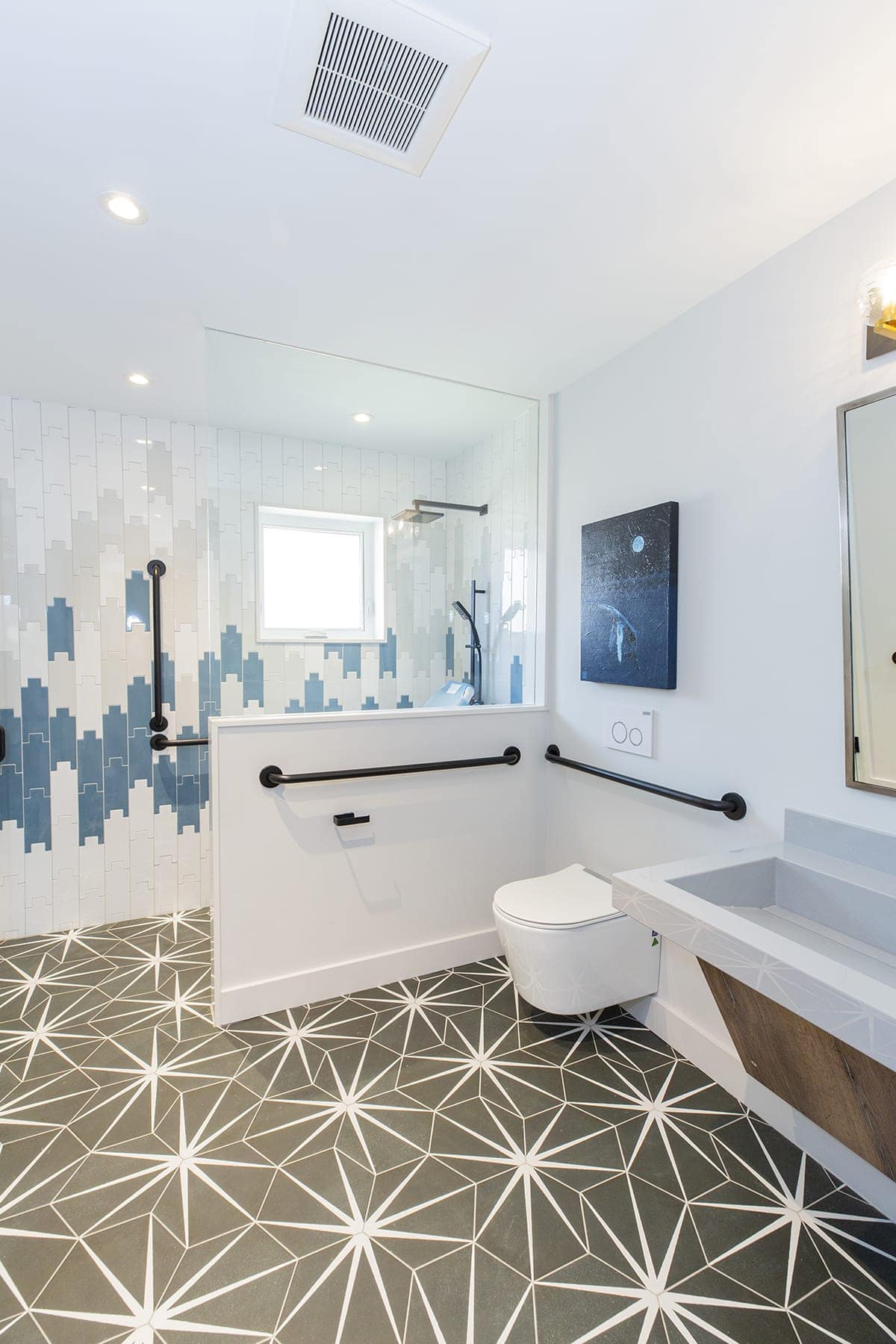
Bathroom from Holmes Family Rescue featuring Panasonic WhisperValue DC
RELATED:
Crack Open Your Windows
Opening a window for 15 minutes, even during the winter, can positively impact the air in your home.
Get A Dehumidifier
Having a dehumidifier will help pull that excess moisture out of the air. It works like a vacuum cleaner, sucking in air from your home at one end, removing the excess moisture, and then blowing it back into your home again.
Look for ENERGY STAR® certified models, which consume less energy than conventional dehumidifiers.
Humidifiers and dehumidifiers have humidistats, as well as some thermostats, usually in newer homes. A humidistat can also help regulate the moisture content in your home.
Use Your Air Conditioner
Yes, that’s right. Your AC unit lowers the moisture level in your home as the air cools. Just make sure your registers and open and unblocked for good airflow.
Replace Caulking
Caulking and weatherstripping improve energy efficiency and prevent humid air from entering a home.
Inspect your doors and windows every season for broken caulking.
RELATED:
Proper Insulation to Control Humidity
Poor insulation can cause moisture to build-up behind your walls and in your attic, which will lead to mold growth. Thinks about these factors:
- Are your floors and walls constantly cold in the winter?
- Do you notice ice dams on your roof?
- Do you have high energy bills?
These are all signs that your home may be poorly insulated. If you suspect that your home is poorly insulated, your best bet is to call a certified home inspector with a thermal imaging camera.

With the use of the thermal imaging camera, the home inspector can help identify exactly where in your home the insulation is lacking.
Inspect Your Gutters
Make sure your gutters work properly and that they direct water away from your home’s foundation. Water is your home’s #1 enemy, and you need to make sure it stays out of your house.
What happens when you have too much moisture in your house?
High humidity levels are not only bad for your home, but they can also cause health issues for you and your family.
If you see moisture inside your window panes, it indicates that you’ve got a water problem with your home. It can cause major damage to the frame and wall below. Finishes can start to rot or rust. Then the rot will spread to the structure underneath, turning a fairly small problem into a much more expensive undertaking.
If the condensation gets inside your walls or attic space that could lead to mildew, mold and rot, which isn’t safe OR healthy. If the moisture and rot get into the structure, you’ve got a big problem on your hands.
Paying attention to your home’s moisture problems is important for the health and comfort of your family.
READ NEXT:
